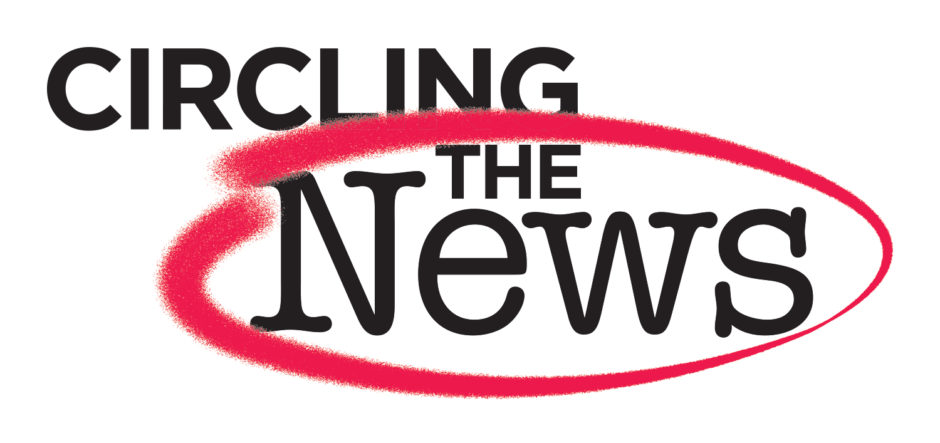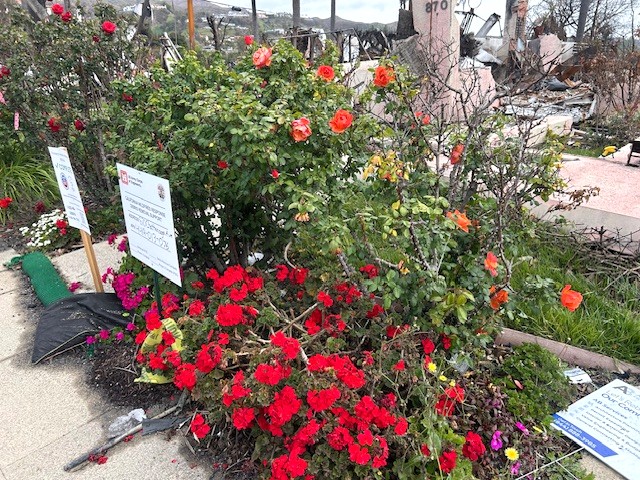While the rest of Los Angeles goes on about its business mostly forgetting there was ever a Palisades or Eaton Fire that killed 28 people and wiped out nearly 16,000 structures, fire victims are not so lucky and deal with the aftermath almost daily.
A major problem in trying to rebuild is not enough insurance and a lack of urgency of insurance companies paying out what the policy dictates.
The bottom line is most residents have never dealt with insurance for a large-scale destruction such as this, and don’t know what to do or to ask and feel like they’re fumbling through the process.
A resident introduced this editor to KC Mancebo Clamorhouse, whom he met at the Disaster Center. She is volunteer with United Policyholders, a nonprofit that helps individuals understand insurance and addresses problems click here.
“Seven years ago, my house caught on fire while I was out of town,” KC said, and added that the dryer caught fire because of a manufacturer defect. “We had no support. It was a nightmare.”
When she saw all the fire victims who would now have to deal with insurance, she thought, “been there, done that” and stepped into aid.
A resident and this editor pummeled her with questions. Both of us had to start the process by finding a new agent, when a local one was not responding.
“What if you don’t seem to be getting anywhere with your adjuster?”
“Ask for a new one from your agent,” she said. For those of us on a fourth or fifth adjuster, it seems like the insurance company changes adjusters to push the claim payout down the road.
Speaking to other Palisades residents it seems that some insurance companies are better than others. “It is a volume issue,” she said, noting that those companies with fewer claims may be more responsive.
In the resident’s opinion, “One adjuster, number three was phenomenal.”
KC said, “Ask for that adjuster, again. I don’t think a lot of adjusters are trained. You have to advocate for yourself.”
She said that some companies are so overwhelmed with claims, they may have outsourced it to other companies, such as Renfroe. “The adjusters are not even that insurance company’s employees,” she said.
KC recommends for people whose homes are still standing, not to move back in, until the insurance company has paid for remediation. “They’re only going to pay for it once,” she said.
For others who will have to rebuild, she said that construction on her home started in 2020 and that she was only able to move back when it was completed in 2023. “We waited for permits for a year,” she said, and suggested if you’re going to rebuild to get plans and have plans submitted now. “Most houses take a year and a half to three to build.”
While waiting on insurance, “building is a terrible decision to make, but it’s a reality. Costs are unknown and the cost and availability of labor is unknown.”
Why does this matter? Most people in their insurance policy have coverage on their dwelling and other structures, such as an ADU or an detached garage. They have personal property coverage and loss of use. They also have additional coverage, which includes debris removal and replacement for trees, shrubs and landscaping.
How long will it take to rebuild, might impact insurance. For example, if insurance only pays for two years for an “apartment” while you rebuild, the speed of construction matters.
Personal property coverage currently requires one to itemize everything lost in your home. There is a bill in the California Senate that would make itemization unnecessary, but if one’s cost through itemization is greater than what is listed for personal property, it can be used as a tax loss on a subsequent year.
There are other options in a policy to know about. For example, there is Option JF , which allows an additional amount above the personal property policy total for jewelry and furs.
There is Option ID (Increased Dwelling), which could be extremely valuable in Southern California. If the cost to rebuild a home exceeds policy limits for Dwelling coverage, there may be additional coverage. Some out-of-state adjusters have argued that residences can be built for as little as $200 sq.ft. here, but most local contractors and architects are estimating the cost will be between $750 to $1200 a square foot.
There is also Option OL (Ordinance/Law), which means if the City has required new residential construction, such as upgrading electric, fire sprinklers, since you first built your home, then this Option would pay for those code upgrades.
The State of Emergency passed by Governor Gavin Newsom in January increases the time for rebuilding and moving back in, which means insurance will pay for additional living expenses. For example, this editor has two years covered in the “Loss of Use Bucket,” but under this order, three years could be paid for by the insurance for an apartment under an extension.
Policies will also pay for debris removal, which could include when a contractor is building and needs to haul construction trash away. But K.C. said “Submit an invoice to your insurance company.”
For some, this disaster not only left them homeless, but with a mortgage on their home. “You have to stay current on mortgage or insurance won’t release money,” she said. “Even if you’re in forbearance, you need to stay current on the mortgage.”
If one is having trouble getting benefits, or issues with adjusters, or any other problem, “call the California Insurance Commission,” she said. “They are responsive.”
She also recommends getting everything in writing. Based on her experience, “This is about you’re willing to tolerate and what you want for your family.
“One needs to talk about real questions and hear the answers,” KC said. “This is not for the faint of heart and won’t be for the next two years.”
She was asked about public adjusters, specifically if they are able to get more money for their clients. “No. They are just someone to assist. An adjustor could be for someone who just doesn’t want to handle insurance and are willing to pay someone to do it.”
According to one public adjuster company, adjusters work on a contingency fee receiving a percentage (10 to 20 percent or more) of the total insurance claim settlement depending on the size of the claim.
“If you use them, you’re paying someone and getting less from insurance,” KC said, but admitted that dealing with the insurance companies and rebuilding “is a full-time job.”
If one goes to the United Policy website, (go to recovery help, and click on Insurance Recovery Library) there are letter samples that can be personalized and sent to insurance companies. KC has also generously said that if there are other fire victims who would like to chat with her and ask questions, she’s happy to do that, too. Reach out to KC at clamorhouse@gmail.com.




I’d hardly say the rest of Los Angeles is going about their business and forgetting about the fires. To do so is spewing vile on the thousands of people who stepped up and assisted in the months afterwards, those who generously gave and are still giving, those who lost jobs and those who have a friend or relative who was affected, which is just about everyone. I’ve been overwhelmed by the generosity we’ve received. I just filled out a form for a second wave of aid from the Red Cross. Last week, a $5,000 set of drums was donated to me and a $4,000 electric piano was donated to Heather. It all sucks, but I’m certainly not going to discount Angeleno’s continued kindness and generosity.
Sue,
Thank you for including the last picture of my house with the roses and geraniums by the front side walk. Also, last week the Corp of Engineers cleared my lot of debris, and I appreciate their excellent job on my property. They left the flowers blooming by the sidewalk, and a few neighbors have stopped by and cut some flowers for there “new home” with my encouragement. I miss all the neighbors as I begin Retirement 2.0 in Punta Gorda, Florida.
Chuck and Susan McGlothlin
870 Chattanooga Avenue
Great point: a public adjuster cannot obtain more money for a policyholder than the underlying insurance policy’s limits
“If you use them, you’re paying someone and getting less from insurance”
In the current environment, in which some insurance companies are supposedly making it hard for policyholders to receive their policy limits, can a public adjuster help?
Sure but, since can does not mean will, that is not a guarantee the public adjuster will be successful
If an insurance company pays out a policyholder’s limits, don’t hire a public adjuster
If an insurance company pays out an unappealing percentage of a policyholder’s limits, consider the payoffs from a DIY approach to negotiating with an insurance company compared to hiring a public adjuster
There is no easy broad-brush way to determine if an individual policyholder will negotiate a better deal with an insurance company relative to a public adjuster
Is it better to hire an attorney to represent one’s interests in a court case or dig deep and find one’s inner Perry Mason?
If the unknown DIY payoff is greater than the unknown public adjuster payoff, do it yourself
If the unknown public adjuster payoff (after contingency fee payment) is greater than the DIY payoff, consider a public adjuster
In both the DIY and public adjuster cases, the policyholder today generally does not know which choice will yield a higher payoff
A policyholder is forced to choose between two unknowns
It’s a bit like deciding which of two black cats in a dark room is larger
There are no free lunches